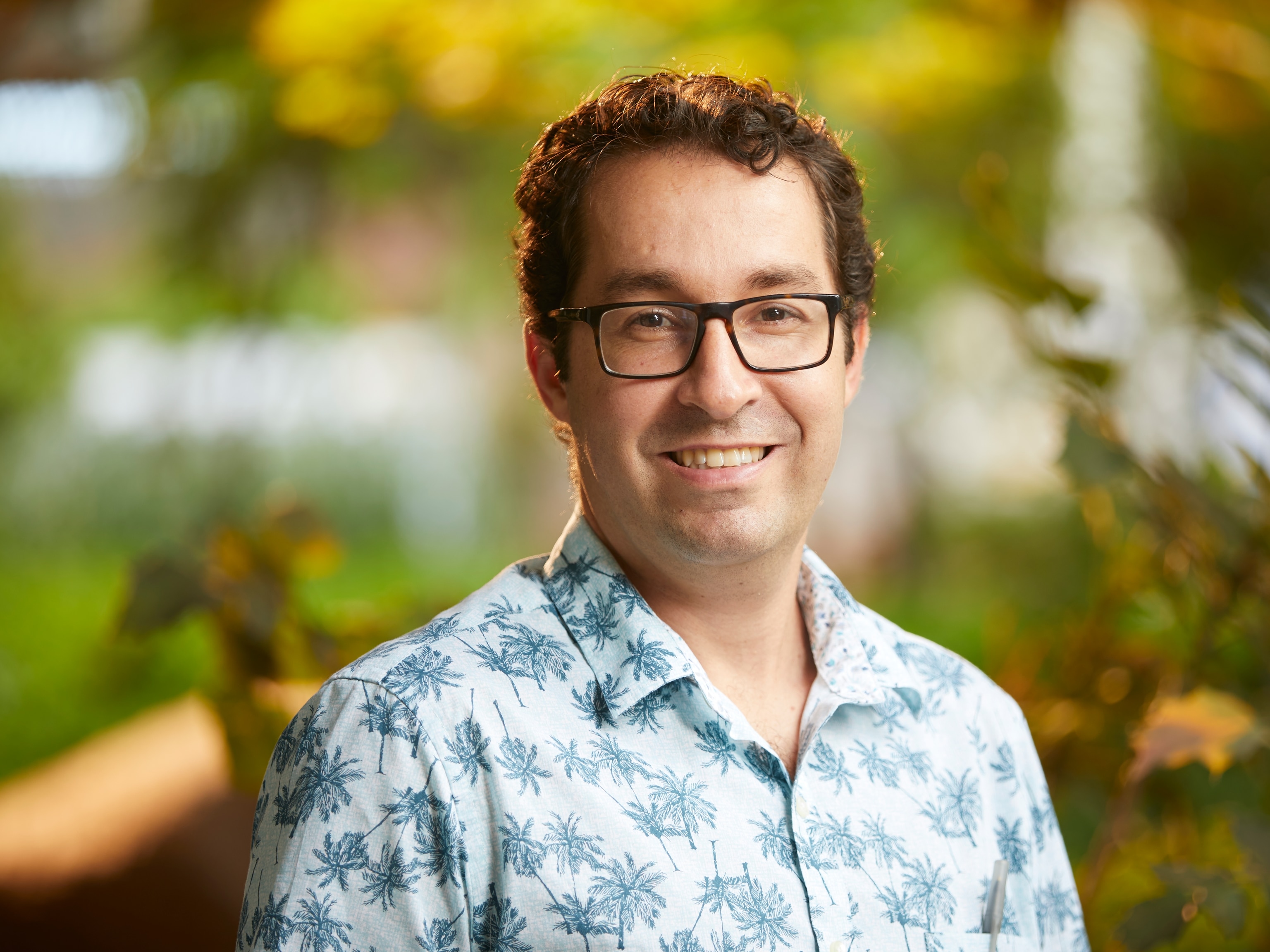Andressa Scabin's work is supporting community-led stewardship of the Amazon
The researcher and conservationist is partnering with people linked to the nature she works to protect
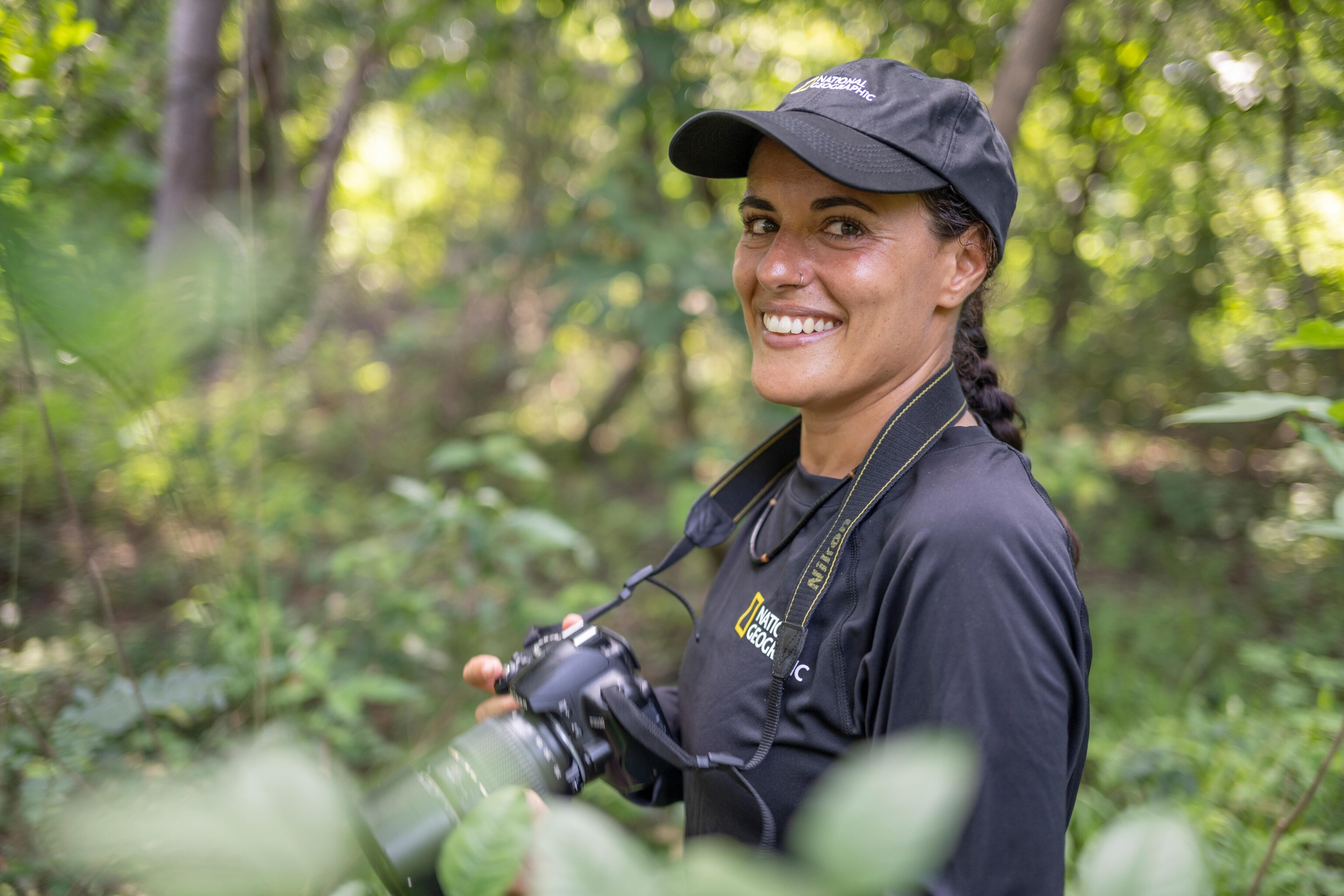
For a city girl from São Paulo, National Geographic Explorer Andressa Scabin spends a considerable amount of time in rainforests. Last year, she logged more days in the Amazon than in her own home. She spent most months scouring the jungle for giant Amazonian River turtles and other aquatic creatures; but it's not unusual for the researcher and conservationist, who has dedicated years to the sustainable protection of tropical forests and their inhabitants.
The proof of her enthusiasm for wildlife is in permanent ink. “I have a sea turtle [tattoo] on my back,” she reveals.
Working in the Amazon was always Scabin's dream. Growing up, she would ping pong between the beach and the countryside, exploring the outdoors whenever she had the chance and though she didn't come from a family of academics, her curiosity propelled her to become a trained biologist and ecologist. But her work stretches beyond these titles. Scabin's research implores her to be a part of policy development, community building, project writing and fundraising.
Right now, her focus is on a series of studies that will form the first scalable, community-led conservation model in Brazil's Juruá River Valley. The work means tracking six key aquatic species, mapping perimeters for their protection, and informing the public on why it all matters.
Protecting Amazonian wildlife is not solely about species conservation, it also means policy that safeguards against deforestation, the perpetuation of the forest through seed dispersal, and the continued food security for the communities that rely on the floodplain ecosystem. For Scabin, and fellow Explorer and project partner João Campos-Silva, the motivation are people. Indigenous peoples and local communities specifically, Scabin says, are also the reason the work is possible.
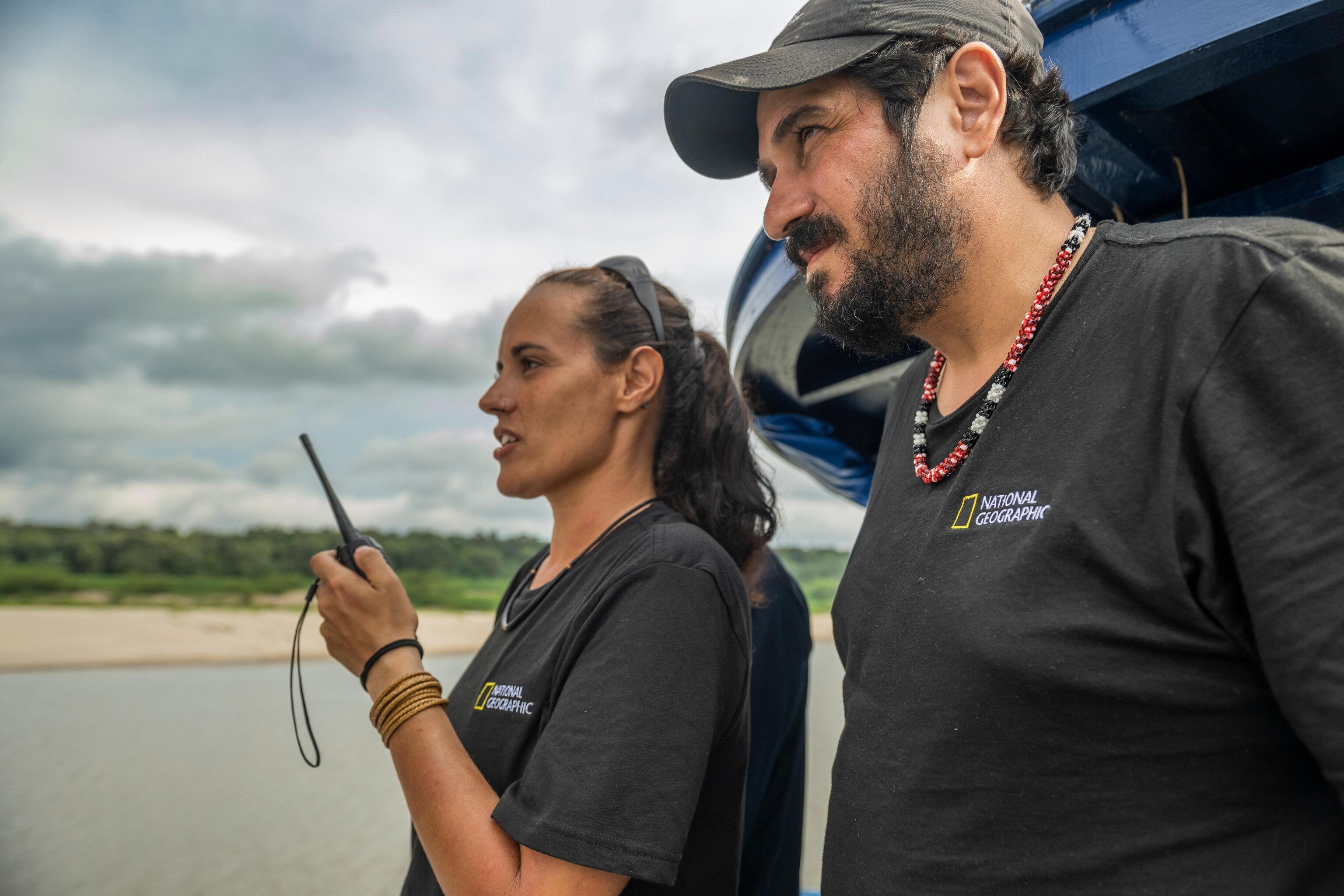
The pair have partnered with local inhabitants of the massively ecologically significant Juruá region to better understand how to steward wildlife and the environment for the long term. Indigenous people and local communities, who Scabin calls the real “heroes,” are the hands and feet of the work.
“I am writing projects and papers, but who is protecting the lakes, who is protecting the beaches and doing the work every day? Riverine and Indigenous people,” she stresses.
Scabin has been forging relationships with Amazonian communities since 2007. Her master's thesis examined the effects of illegal logging on tree growth, for which she collaborated with park managers of Anavilhanas National Park. She dedicated her doctoral studies to investigating the problem of overhunting, and its effect on forest structure, composition and carbon storage.
She also found research to support a hypothesis that the Amazon's terrestrial pressures - including mining and deforestation - may have even more alarming impacts on its rivers. While land animals have ample room to roam, Scabin explains, river dwellers struggle to hide from threats like poachers.
The 20th-century skin and fur trade caused a basin-wide collapse among Brazil's aquatic species, which have still not made a full recovery. Scientists estimate some 4.5 million black caimans were commercially hunted between 1904 and 1969, with other animals like giant otters and manatees also poached to the point of near extinction.
“I was always looking for the human effects on nature,” Scabin recalls, and research helped her answer these questions. The stark reality of animal and tree populations hit hard by the trade and other growing threats beckoned her to be part of a solution.
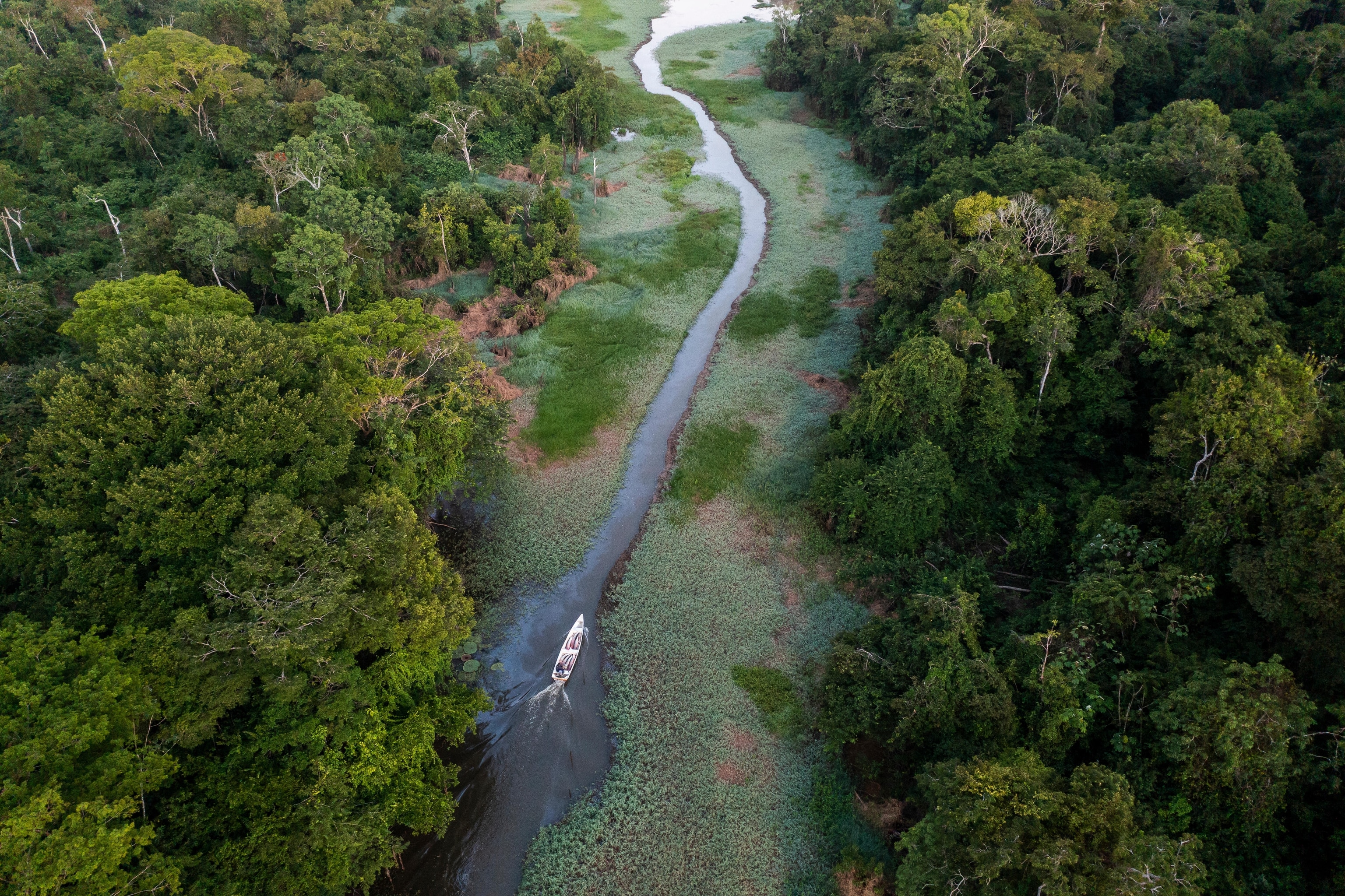
Now, she says, “I prefer to solve problems than answer questions. My main focus is how to use scientific knowledge to solve conservation issues.”
Scabin found hope and a way forward in one repopulation effort that proved fruitful. Her long-time colleague Campos-Silva backed Indigenous-managed efforts to restore the arapaima–the world's largest scaled, freshwater fish–which helped turn its fate from the brink of extinction toward an eventual population recovery by 600 percent.
Seeing the payoff of territory protection led by local communities, and coordinated by the Rural Producers Association of Carauari, Scabin's optimism for the future of other species grew. She, Campos-Silva, and a team of fellow researchers launched Instituto Juruá, an organization that works with local communities to propose solutions for Amazon conservation, and the well-being of local populations combining traditional and scientific knowledge.
Today, the conservation model she's helping build today forms part of the National Geographic and Rolex Perpetual Planet Amazon Expedition to further understand the intricate role the Amazon River Basin plays in maintaining the entire ecosystem of the Amazon, from the Andes to the Atlantic. The process has brought Scabin closer than ever to turtles, and other aquatic megafauna.
With a team of researchers, Scabin and Campos-Silva began setting out for expeditions in May of 2022; first to conduct nearly 300 interviews to understand conservation from a local and Indigenous perspective, then, to subsequently place crittercams and GPS tags on turtles, pink river dolphins, arapaima fish, black caimans, and manatees to assess their health and track their movements. They plan to tag giant river otters in the future, as an extension of the project. The data will form the basis of a map for new protected areas.
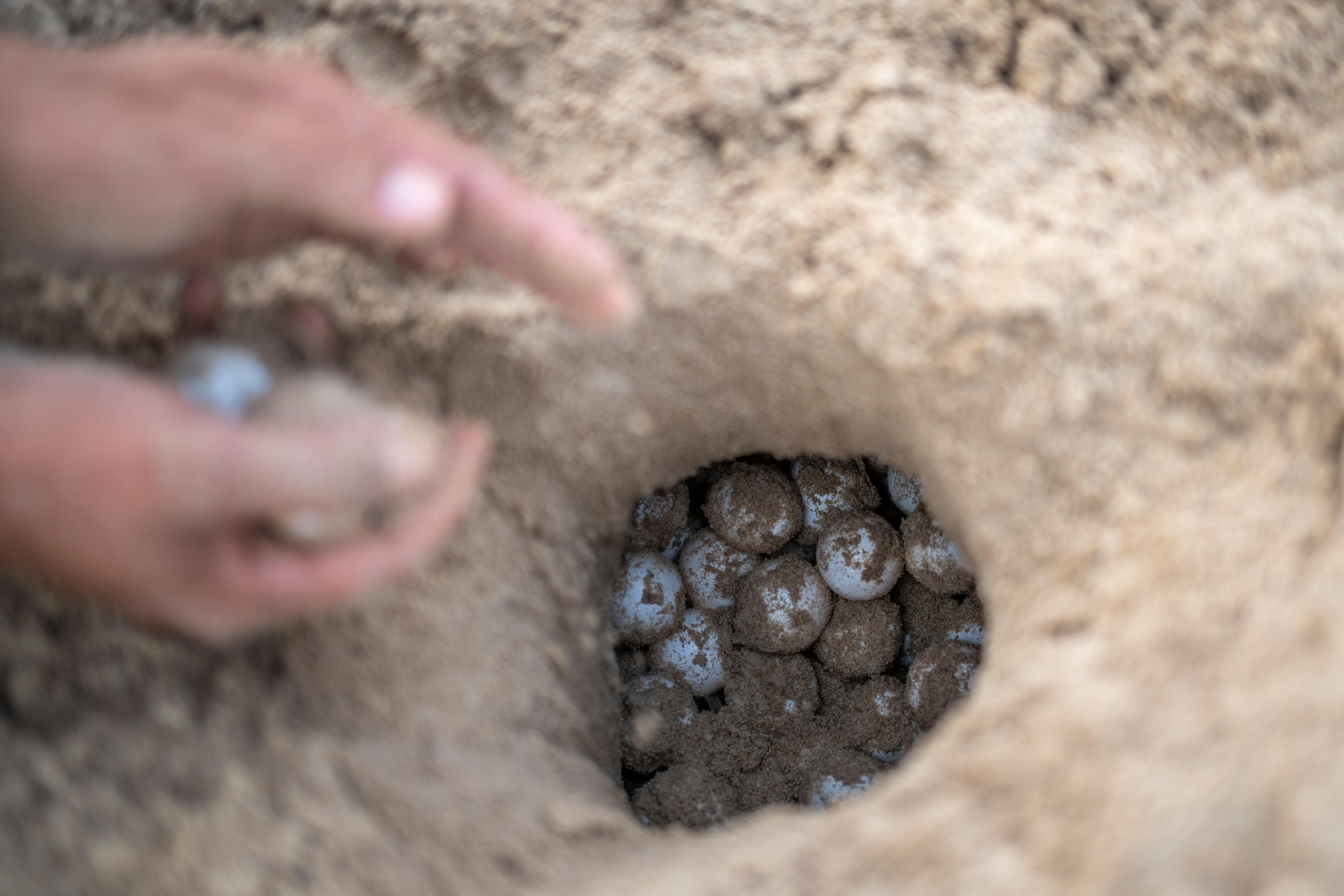
.jpg)
One of the challenges is the unpredictable nature of trying to track wild animals. Despite working in the Amazon for over a decade, Scabin has yet to spot a manatee in the wild herself. After 14 years, she finally saw the water giant–an endangered species–unexpectedly, served on a plate.
“Of course, I had to make an excuse not to eat this,” she remembers, but she did note what it meant: If manatees are being hunted, a human must know where to find them.
One skilled hunter from nearby Carauari city suggested she look for teeth marks on the river grass manatees graze. The number of visible bite marks can indicate how recently a manatee was around; it's an example of the conventional wisdom that comes from a deep connection with nature. The hunter used this method to make a profitable, and illegal, catch. But since assisting Scabin and her research team, he's put down his harpoon.
The impact of community-based conservation on human lives is already evident, though the research is still ongoing. Continued arapaima management work, including counting and monitoring the megafish, is being led in large part by women, a break in tradition. Scabin notes that the team has hosted two arapaima counting courses, with thirty women attendees at each. These courses aim to increase female participation in the arapaima management beyond cleaning the fish, and ensuring income generation and financial autonomy for women.
Indigenous-led conservation has borne ecological benefits, income generation and an overall improvement in the quality of human lives, Scabin drives home. It's a testament to the value of an intimate connection with the land, and a spirit of collaboration, which the future of the Amazon depends on.
“You cannot even hold one fish by yourself,” Scabin says. An arapaima can weigh over 400 pounds and sometimes reach more than 10 feet in length. “So, we need to be working in a collaborative way,” she explains, always giving credit to the network of changemakers on the ground.
“The people motivate me to stay working here,” Scabin stresses. “They become our family, and we think that they are the real heroes of this story.”
Andressa Scabin is participating in the National Geographic Society Perpetual Planet Amazon Expedition—a two-year series of scientific studies spanning the entire Amazon River Basin, supported by Rolex as part of its Perpetual Planet initiative. Learn more about the expedition.
ABOUT THE WRITER
For the National Geographic Society: Natalie Hutchison is a Digital Content Producer for the Society. She believes authentic storytelling wields power to connect people over the shared human experience. In her free time she turns to her paintbrush to create visual snapshots she hopes will inspire hope and empathy.



